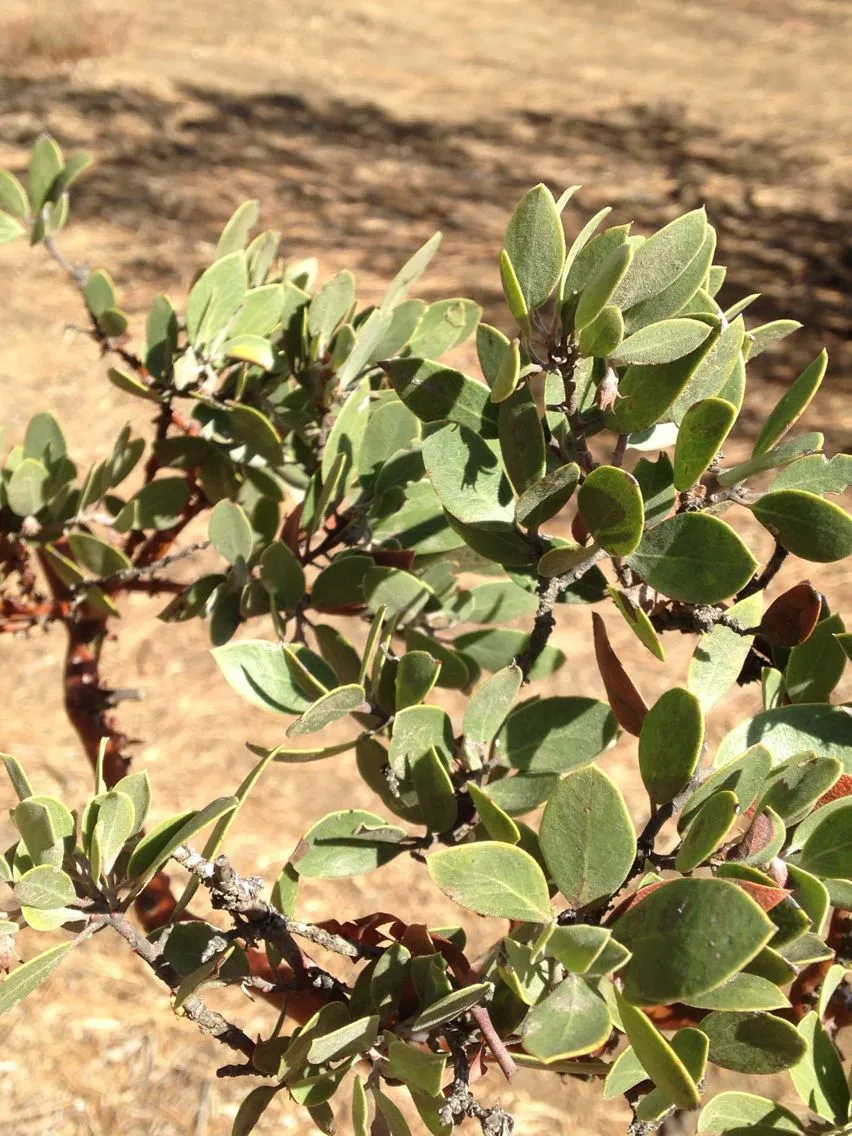
Author: Kunth
Bibliography: F.W.H.von Humboldt, A.J.A.Bonpland & C.S.Kunth, Nov. Gen. Sp. 3: 278 (1819)
Year: 1819
Status: accepted
Rank: species
Genus: Arctostaphylos
Vegetable: False
Observations: SW. & SC. U.S.A. to Mexico
The Mexican manzanita, scientifically known as Arctostaphylos pungens, is an intriguing and resilient species belonging to the Ericaceae family. Recognized for its distinctive features and adaptability, this plant has a notable presence spanning from the southwestern and south-central regions of the United States down to Mexico.
The botanical description of the Mexican manzanita was first meticulously documented by the eminent botanists F.W.H. von Humboldt, A.J.A. Bonpland, and C.S. Kunth in their publication “Nova Genera et Species Plantarum” in 1819. This seminal work, noted for its comprehensive exploration of plant genera and species, introduced Arctostaphylos pungens to the scientific community at large.
Characterized by its robust nature, the Mexican manzanita thrives in diverse climatic conditions. This adaptability allows it to flourish in areas where water conservation and drought resistance are paramount. Its hardy foliage and vibrant red berries not only contribute to its aesthetic appeal but also support a range of local wildlife, offering both nourishment and habitat.
The plant’s structure is typically shrub-like, with a tendency to spread low and wide. The leaves are notably pungent, as suggested by the species name “pungens,” lending to its distinctive aroma and texture. This unique characteristic aids in its identification and has earned it a cherished spot in native plant gardens and landscapes designed for low-water use.
Ecologically, Arctostaphylos pungens plays a critical role in its native habitats, promoting soil stability and providing forage for animals. Its berries, although tart, are edible and have been historically utilized by indigenous populations for both nutritional and medicinal purposes.
In modern horticulture, the Mexican manzanita is valued not only for its beauty and hardiness but also for its ability to thrive with minimal human intervention. This makes it an ideal choice for sustainable landscaping and restoration projects aimed at preserving the natural environment.
In conclusion, Arctostaphylos pungens stands as a testament to the rich botanical diversity found within the Ericaceae family. Its history, ecological significance, and practical applications ensure that it remains a species of interest for botanists, ecologists, and horticulturists alike.
Eng: mexican manzanita, point-leaf manzanita, pointleaf manzanita
En: Mexican manzanita, Point-leaf manzanita, Pointleaf manzanita
Nv: Dinas bineestʼąʼ
Taken Nov 25, 2014 by EOL − Damon Tighe (cc-by-nc)
Taken Jul 18, 2006 by EOL − Steven J. Baskauf (cc-by-nc-sa)
Taken Jul 18, 2006 by EOL − Steven J. Baskauf (cc-by-nc-sa)
Taken Mar 5, 2016 by EOL − DRyan (cc-by-nc)
Taken Mar 8, 2016 by EOL − Katja Schulz (cc-by)
Taken Jul 18, 2006 by EOL − Steven J. Baskauf (cc-by-nc-sa)
Taken Jul 18, 2006 by EOL − Steven J. Baskauf (cc-by-nc-sa)
Taken Jul 18, 2006 by EOL − Steven J. Baskauf (cc-by-nc-sa)
Taken Jul 18, 2006 by EOL − Steven J. Baskauf (cc-by-nc-sa)
Taken Jul 9, 2022 by Johnny Poppyseed (cc-by-sa)
Taken Jun 10, 2020 by Jordanium Kernum (cc-by-sa)
Taken Oct 11, 2013 by EOL − Kenneth Bader (cc-by-nc)
Taken Jun 14, 2013 by EOL − BJ Stacey (cc-by-nc)
Taken Dec 6, 2022 by Chlorophytum Comosum (cc-by-sa)
Taken Jul 9, 2022 by Johnny Poppyseed (cc-by-sa)
Taken Jan 1, 1900 by EOL − Zylstra, J. (cc-by-nc-sa)
Taken Oct 29, 2014 by EOL − Neptalí Ramírez Marcial (cc-by-nc)
Taken Feb 4, 2015 by EOL − Belinda Lo (cc-by-nc-sa)
Taken Mar 5, 2014 by EOL − Carlos Velazco (cc-by-nc)
Taken Jul 9, 2022 by Johnny Poppyseed (cc-by-sa)
Taken Feb 4, 2015 by EOL − Belinda Lo (cc-by-nc-sa)
Taken Dec 24, 2008 by EOL − Keir Morse (cc-by-nc-sa)
Taken Apr 4, 2014 by EOL − abr (cc-by-nc)
Taken Nov 9, 2013 by EOL − Anita (cc-by-nc)
Taken Oct 29, 2014 by EOL − Neptalí Ramírez Marcial (cc-by-nc)
Taken Nov 25, 2014 by EOL − Damon Tighe (cc-by-nc)
Growth form>: Multiple Stem
Growth habit>: Subshrub, Shrub
Growth rate>: Slow
Ph maximum: 7.0
Ph minimum: 5.7
Family: Myrtaceae Author: (F.Muell.) K.D.Hill & L.A.S.Johnson Bibliography: Telopea 6: 402 (1995) Year: 1995 Status:…
Family: Rubiaceae Author: Pierre ex A.Froehner Bibliography: Notizbl. Bot. Gart. Berlin-Dahlem 1: 237 (1897) Year:…
Family: Sapindaceae Author: Koidz. Bibliography: J. Coll. Sci. Imp. Univ. Tokyo 32(1): 38 (1911) Year:…
Family: Asteraceae Author: A.Gray Bibliography: Pacif. Railr. Rep.: 107 (1857) Year: 1857 Status: accepted Rank:…
Family: Fabaceae Author: Medik. Bibliography: Vorles. Churpfälz. Phys.-Ökon. Ges. 2: 398 (1787) Year: 1787 Status:…
Family: Aspleniaceae Author: (Cav.) Alston Bibliography: Bull. Misc. Inform. Kew 1932: 309 (1932) Year: 1932…